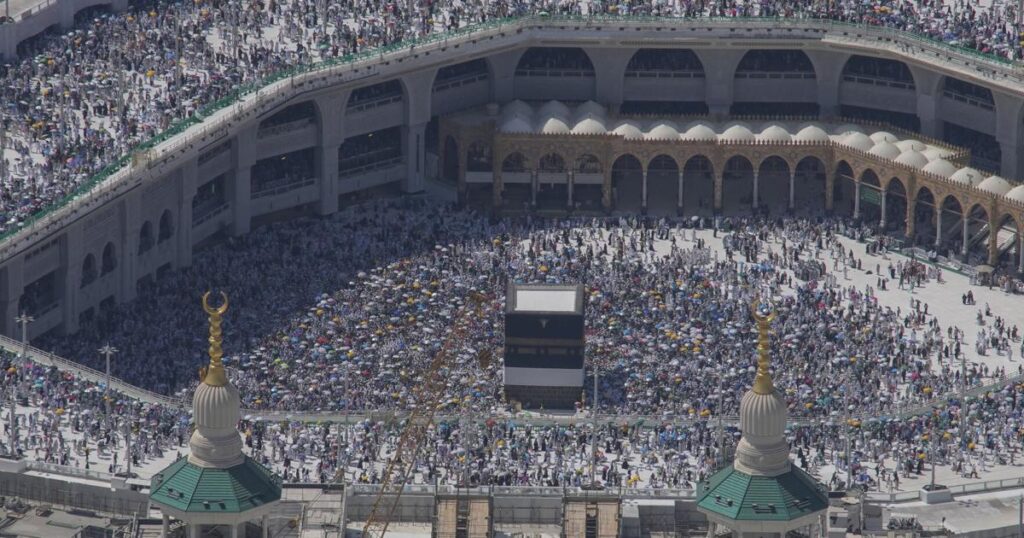Breaking News: Over 1,300 Pilgrims Die During Hajj in Saudi Arabia Amid Extreme Heat
CAIRO (AP) — In a devastating turn of events, more than 1,300 pilgrims succumbed to the extreme heat during this year’s Hajj pilgrimage in Saudi Arabia, officials confirmed on Sunday.
According to Saudi Arabia’s Health Minister Fahd bin Abdurrahman Al-Jalajel, a significant 83% of the fatalities were among unauthorized pilgrims who undertook long treks under the scorching sun. The overall death toll includes over 660 Egyptians, two Cairo-based officials disclosed.
Egypt has responded by revoking the licenses of 16 travel agencies responsible for facilitating the illegal travel of pilgrims using unauthorized visas. These agencies allegedly left many travelers stranded at Hajj sites like Mecca, exposing them to severe heat.
The Egyptian government has officially announced the death of 31 authorized pilgrims, attributing these fatalities to chronic diseases. However, sources report that at least 630 other Egyptians died, most of them in Mecca’s Al-Muaisem neighborhood. An Egyptian diplomat disclosed that most of the deceased have been interred in Saudi Arabia.
The Saudi authorities have conducted operations to remove tens of thousands of unauthorized pilgrims, many of whom were Egyptians who managed to reach holy sites around Mecca on foot and lacked adequate shelter.
Additionally, an Associated Press tally found other fatalities included 165 Indonesian pilgrims, 98 from India, and numerous others from Jordan, Tunisia, Morocco, Algeria, and Malaysia. Two American pilgrims were also reported dead. Various countries, including Jordan and Tunisia, attributed these deaths to the extreme heat. Saudi officials have not yet commented on the fatalities.
Images and reports from Associated Press journalists on the ground described harrowing scenes of pilgrims fainting and collapsing from the heat, particularly during the second and third days of the pilgrimage.
Hajj, one of the five pillars of Islam, is one of the world’s largest religious gatherings, drawing more than 1.83 million Muslims this year, including more than 1.6 million from 22 countries and around 222,000 Saudi citizens and residents. Despite significant investments by Saudi Arabia in crowd control and safety measures, the sheer volume of participants presents ongoing challenges.
This year’s Hajj saw daily temperatures range from 46 to 49 degrees Celsius (117 to 120 degrees Fahrenheit) in Mecca and surrounding sacred sites. The difficulties posed by rising temperatures are projected to worsen. A 2019 study by the Massachusetts Institute of Technology suggests that climate change could render future Hajj seasons exceedingly dangerous between 2047-2052 and 2079-2086, even under optimal climate mitigation scenarios.
The Hajj follows a lunar calendar, arriving approximately 11 days earlier each year. From 2029 onward, the pilgrimage is expected to occur in April, with subsequent years falling in the winter when conditions are milder.
Past incidents during Hajj have also been grim. In 2015, a stampede in Mina claimed over 2,400 lives, and that same year, a crane collapse at Mecca’s Grand Mosque killed 111. The second-deadliest incident dates back to 1990 when a stampede killed 1,426 people.
Source: Associated Press.
